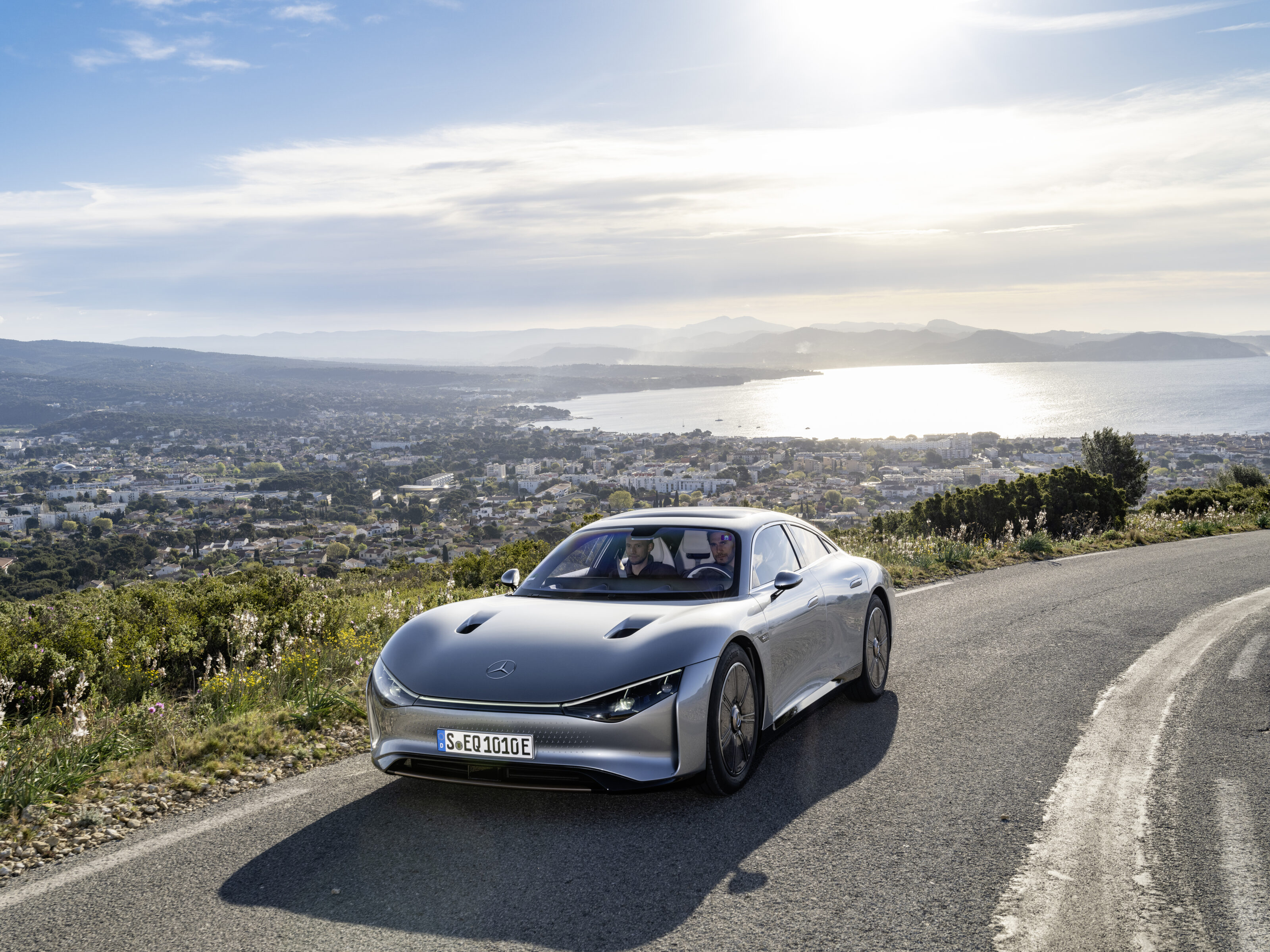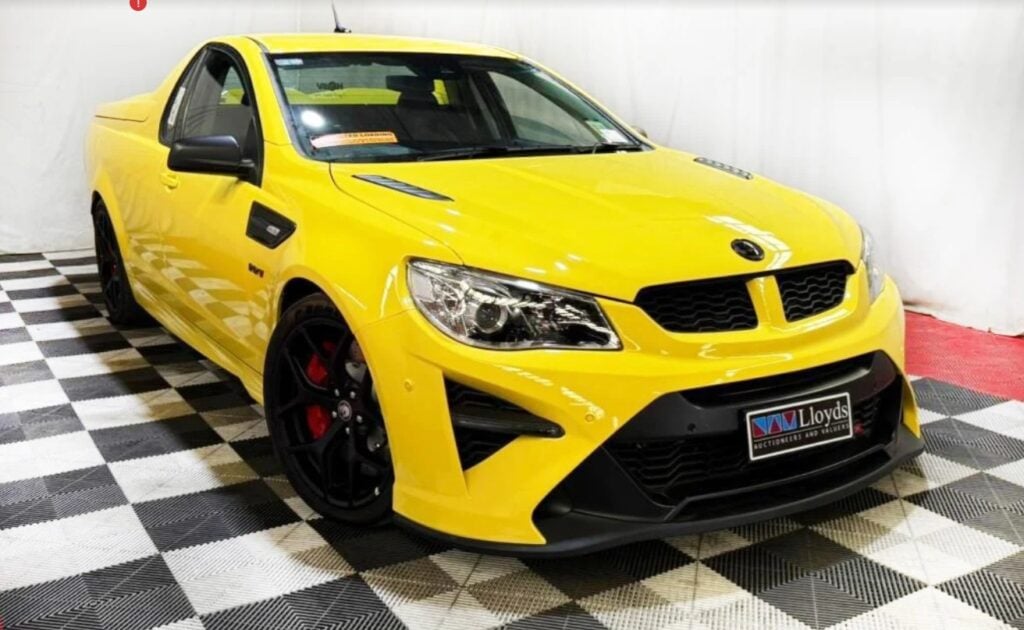Mercedes-Benz‘s VISION EQXX battery-electric test vehicle has travelled more than 1000 kilometres from Germany to the south of France on a single charge.
Travelling from the Sindelfingen assembly plant near Stuttgart across the Swiss Alps and Northern Italy to its destination of Cassis on the Côte d’Azur.
The journey started in cold and rainy conditions, and was undertaken at regular speed limits, save for a stint of fast-lane cruising at up to 140 km/h on an autobahn.
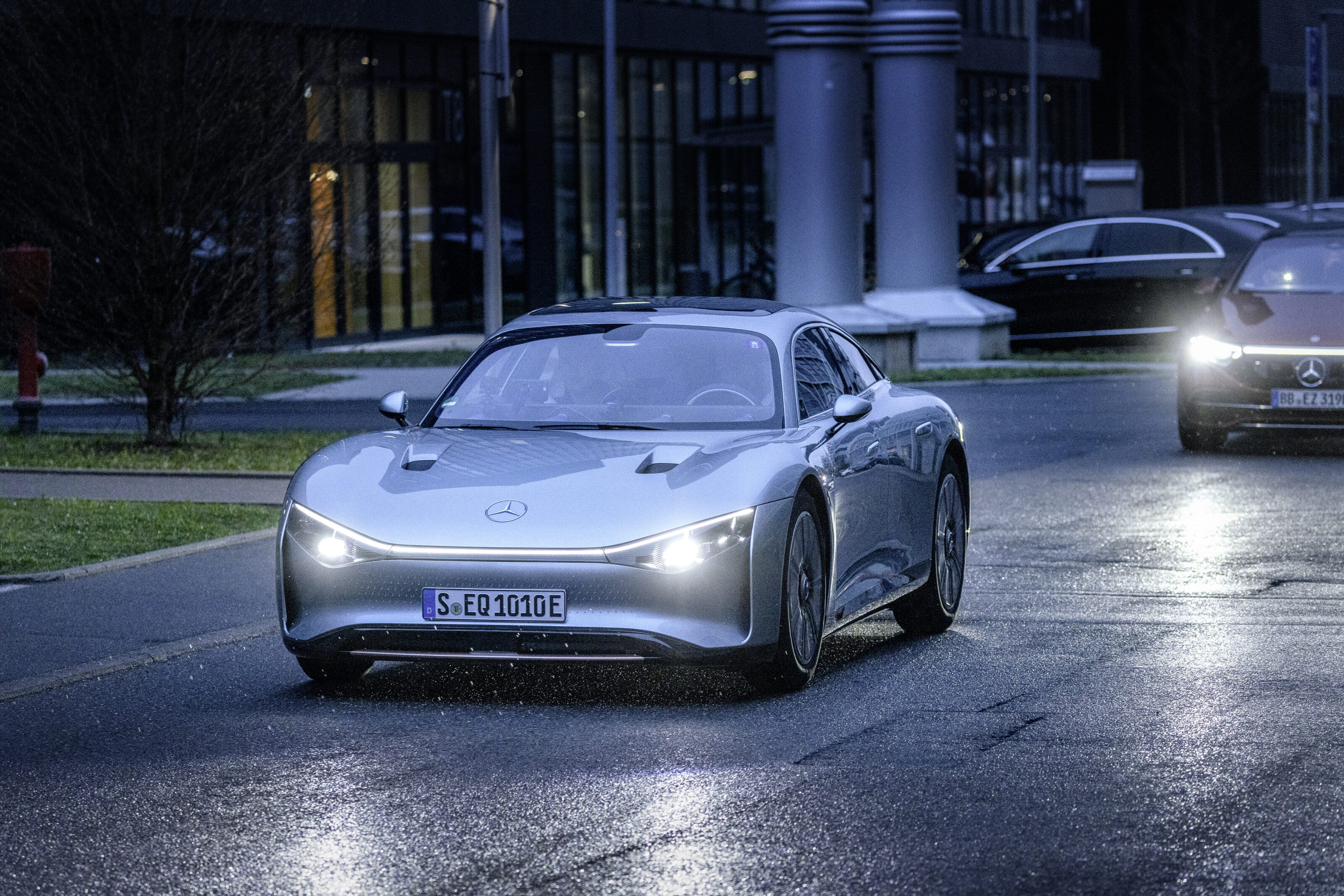
The 100kWh battery’s state of charge on arrival at Cassis was around 15 per cent, which would have provided an additional 140km of range.
Efficiency was what Mercedes-Benz claims is a record-breaking low of 8.7 kWh/100km. By comparison, one of the more economical EVs on the market, the Hyundai Kona, will do about 13.5kWh/100km on a good day.
To prove its endurance, the VISION EQXX’s charging socket was sealed and it was accompanied by an independent expert from the certification body TÜV Süd.
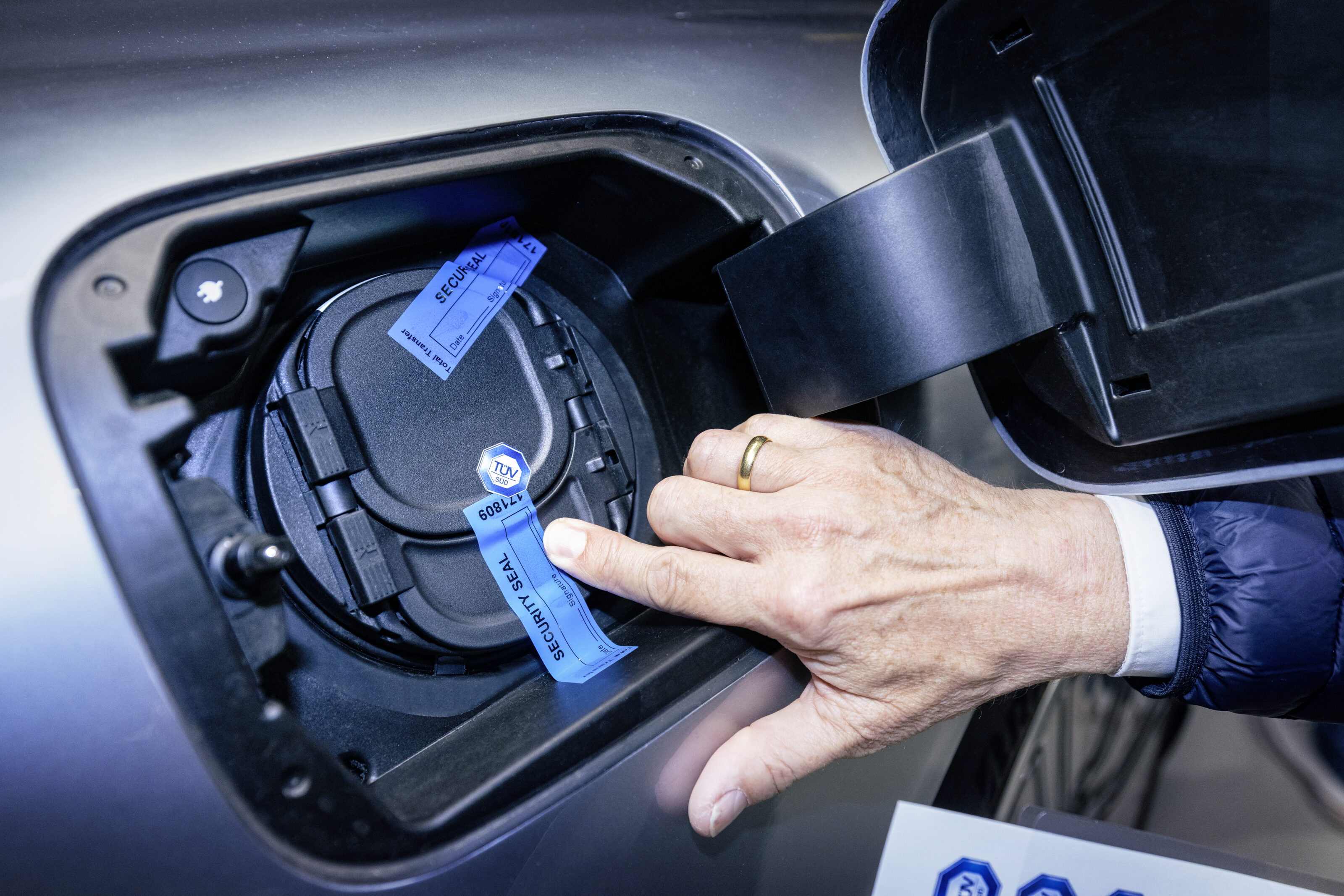
According to Mercedes-Benz, the achievement has delivered a new benchmark for electric vehicle efficiency and the technology used in the vehicle will be deployed in upcoming series-production vehicles.
“The VISION EQXX is the most efficient Mercedes ever built,” said Ola Källenius, Chairman of the Board of Management of Mercedes-Benz Group AG.
Innovative technology
“The technology programme behind it marks a milestone in the development of electric vehicles. It underpins our strategic aim to ‘Lead in Electric’.”
The VISION EQXX completed the one-day road trip across several European borders: from Germany to Switzerland, on to Italy, past Milan and finally to its destination, the port town of Cassis in France.
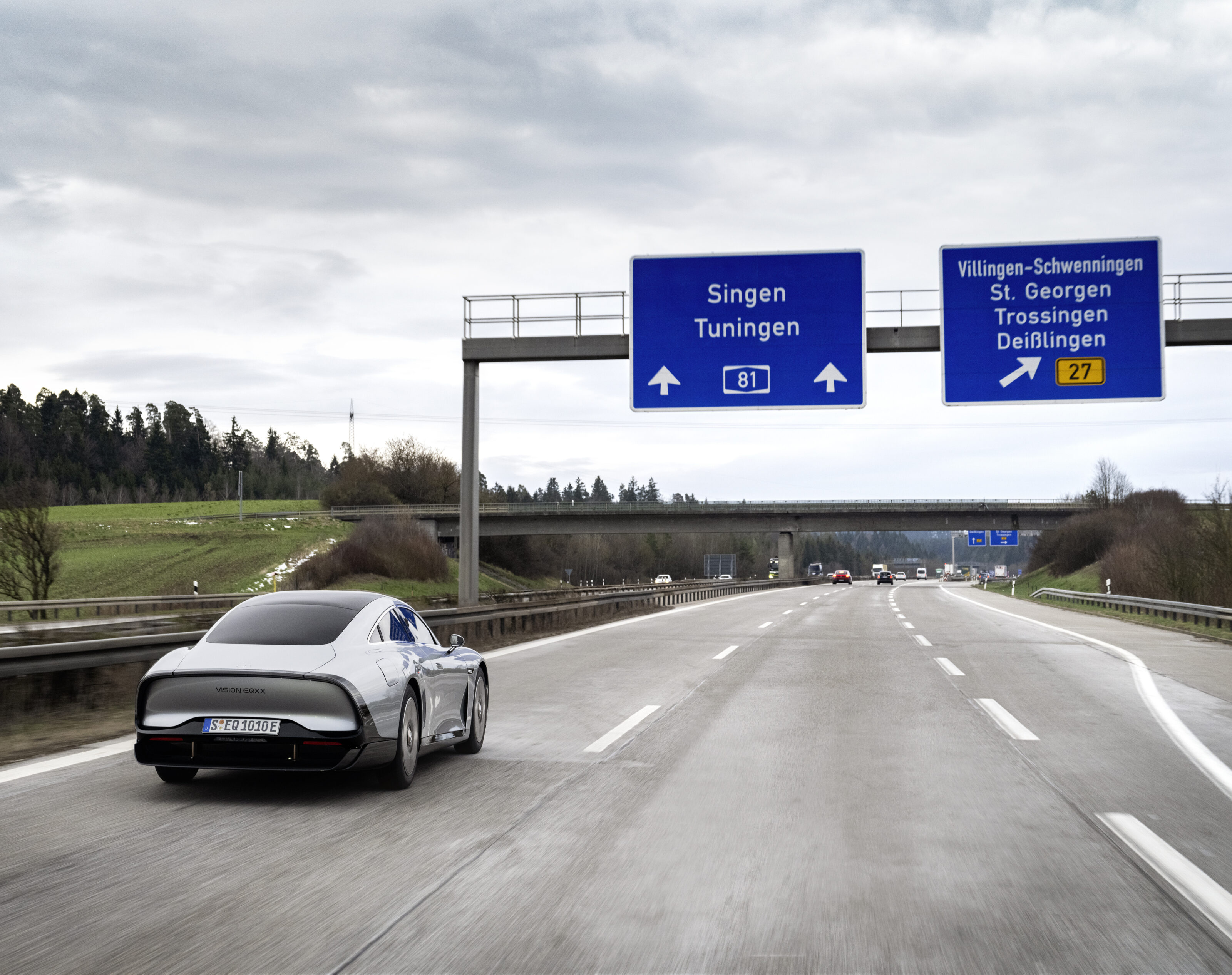
The route profile – which included everything from freeways to mountain passes and even roadworks – and the weather conditions were chosen to provide a wide variety of challenges. This included travelling in cold conditions where lithium-ion batteries are most inefficient – temperatures from start to finish ranged from three to 18 degrees Celsius.
Countering the cold was the VISION EQXX’s slippery design that sees it achieve a drag co-efficient of 0.17 – the Porsche Taycan’s is 0.22.
Much of this is due to the small frontal area of 2.12 m² and fishtail rear end that mean the rear wheels roll in the slipstream of the front wheels. An active rear diffuser, which automatically deploys at 60 km/h, provides better airflow to significantly reduce drag.
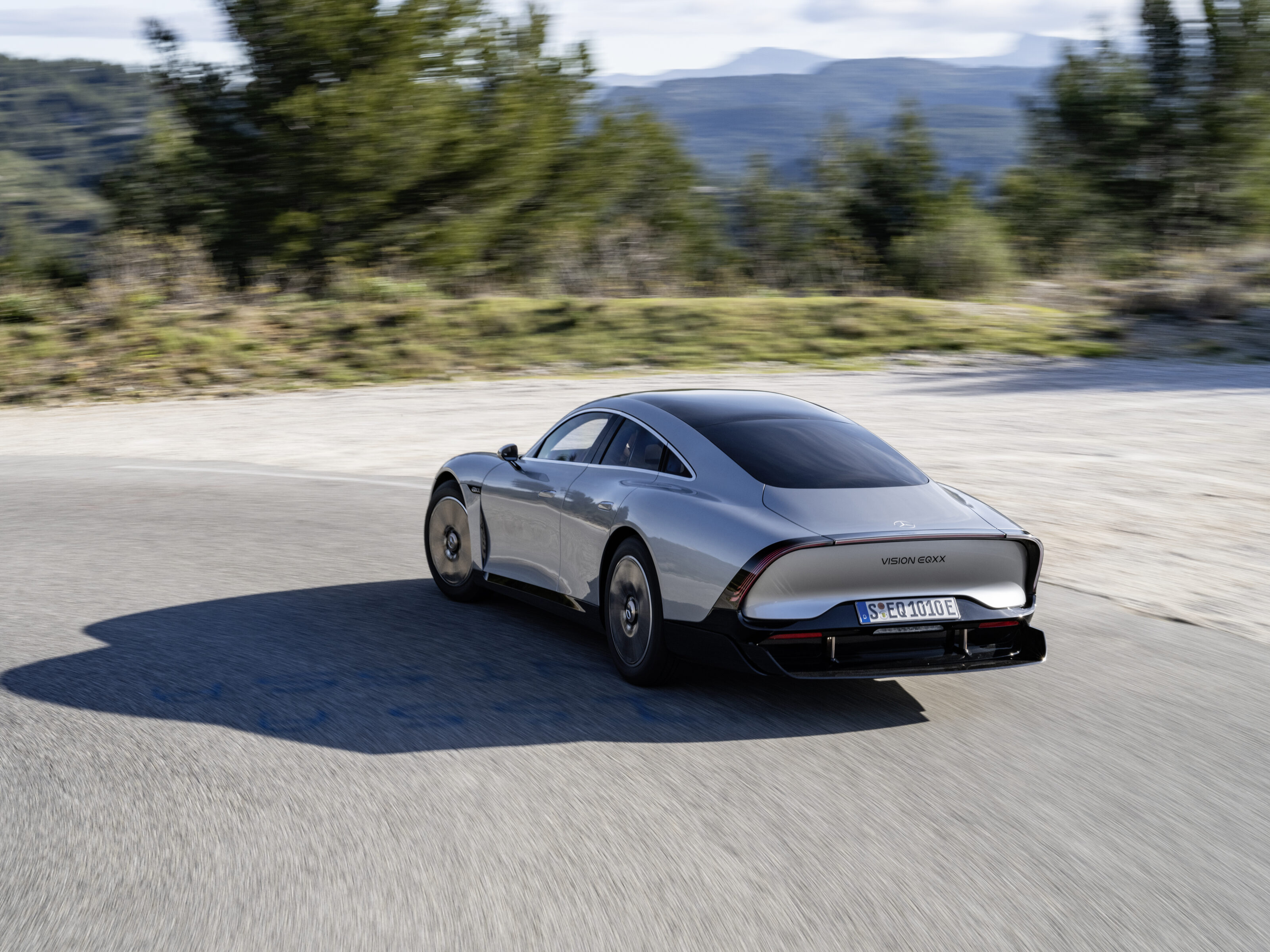
Then there are the tyres Bridgestone designed specifically for the VISION EQXX, which have a very low rolling-resistance rating of 4.7 thanks, in part, to their 185/65 R 20 97 dimensions (large diameter and a narrow tread).
By way of comparison, the current EU tyre label requires a figure of 6.5 for the top rating in Class A, with the Mercedes-Benz EQS rolling on tyres with a resistance of 5.9.
The VISION EQXX’s lightweight construction, helped by the dedicated electric chassis with a lightweight F1 subframe and aluminium brake discs, was particularly helpful during the uphill climbs through the Alps.
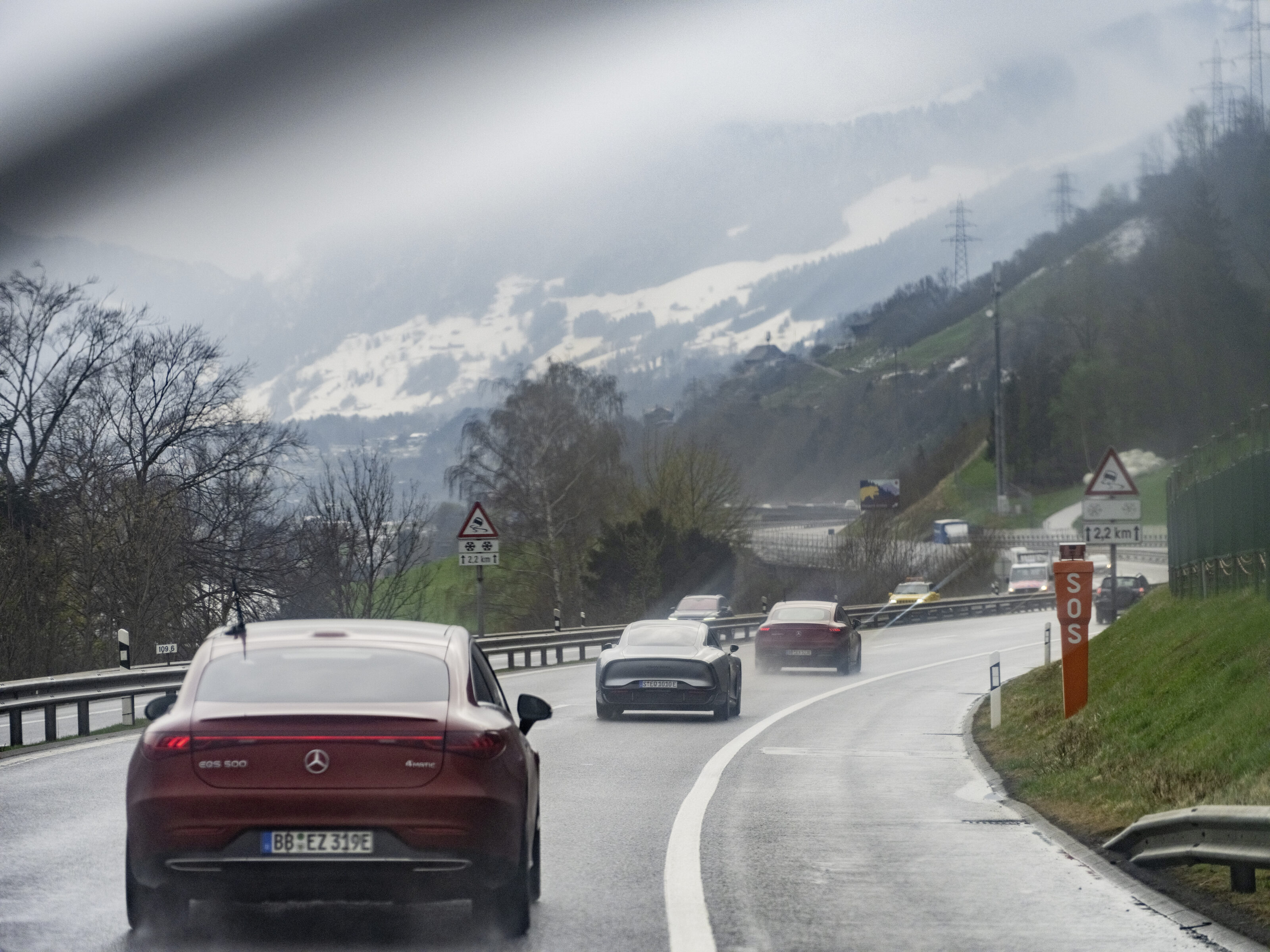
Also contributing to the light weight (1755 kilograms unladen) is the battery. At 100kWh, the power storage unit developed specifically for the VISION EQXX has almost the same amount of energy as the battery of the EQS, but has half the volume and is 30 per cent lighter.
The outcome is that the compact battery, measuring just 200 x 126 x 11 centimetres, is also comparatively light at 495 kilograms and can fit in a compact car.
One good thing about negotiating mountains in an EV is when you have to come back down. The VISION EQXX made the most of the situation, with its highly efficient regenerative braking system pegging back some of its battery charges.

The VISION EQXX can use regen braking’s recuperation effect on any type of gradient and during every braking manoeuvre, thus extending its driving range. A positive side effect is that the mechanical brakes are barely used, which makes it possible to use new types of aluminium brake discs that weigh significantly less than their steel counterparts.
Another way to conserve energy is through the rooftop solar panels that proved useful around midday in the Po Valley near Milan. The 117 solar cells feed the 12-volt battery, which supplies power to auxiliary functions such as the navigation system – which reduces the load on the high-voltage battery.
Overall, the solar booster increased driving range by more than two per cent – which adds up to a good 25 kilometres on a journey of more than 1000.
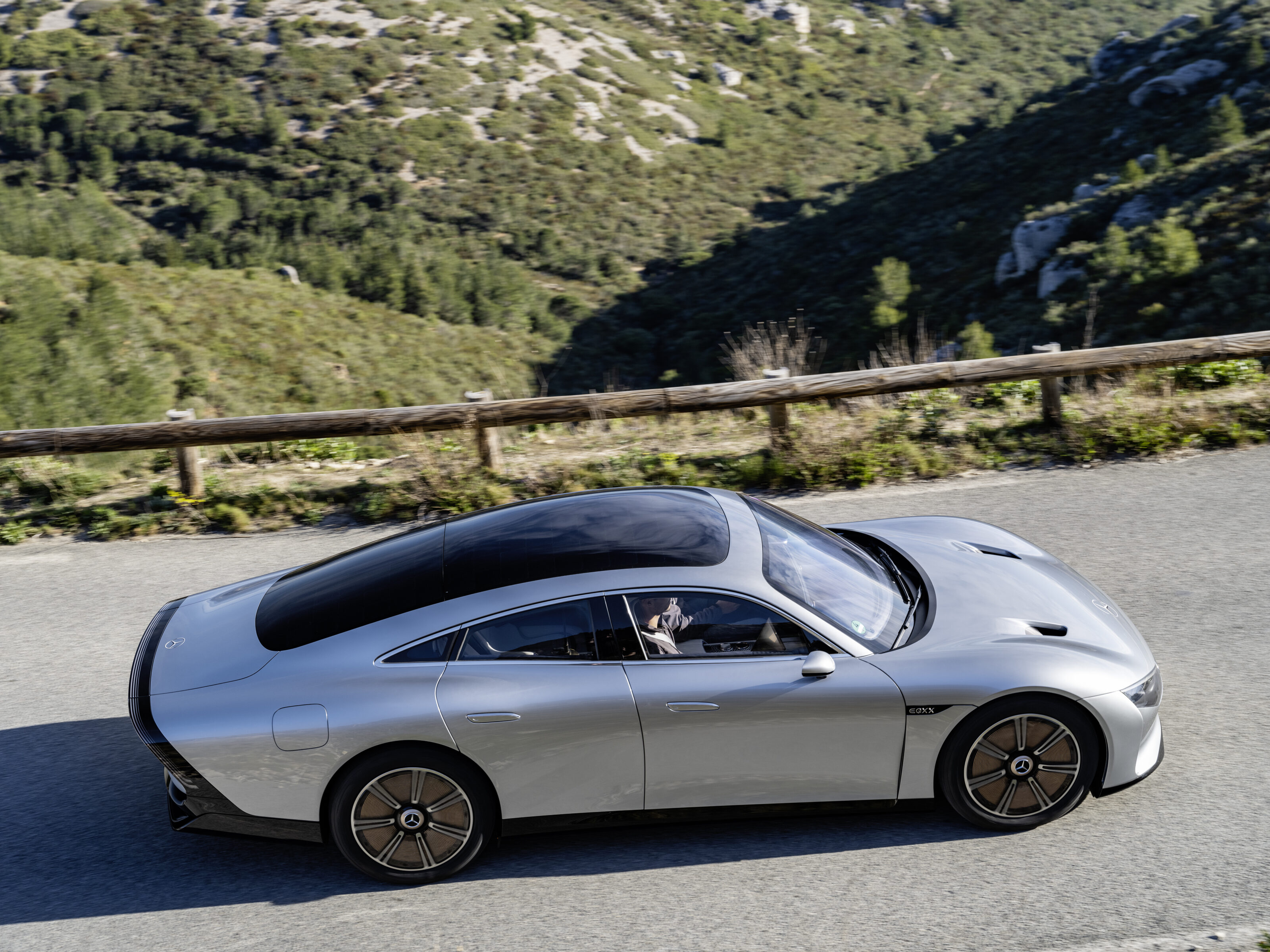
The electric drive unit in the VISION EQXX – consisting of the electric motor, transmission and power electronics – was developed together with the F1 specialists at Mercedes-AMG High Performance Powertrains (HPP) and has a peak output of 180kW.
Just like the battery, the electric drive unit is compact, lightweight and highly efficient. Its average efficiency is 95 per cent, which means 95 per cent of the energy from the battery ends up at the wheels.
VISION EQXX specifications
VISION EQXX quick facts
- It completed more than 1000km with a single battery charge in real everyday traffic
- Efficiency-enhancing measures lead to very low battery consumption of 8.7kWh/100 km
- The aerodynamics and exterior design enable a benchmark drag coefficient of 0.17, which has a particularly positive effect on energy consumption at high speeds on the motorway
- The tyres with a significantly lower rolling resistance than the class A required by the EU tyre label and improved aerodynamic geometry, combined with lightweight magnesium wheels, provide more driving range
- The radically new drive concept developed by Mercedes-Benz achieves a benchmark efficiency of 95 per cent from the battery to wheels
- Advanced digital tools enable innovative lightweight designs that increase efficiency and driving range
- Ultra-thin roof panels feed the battery system and provide up to 25km of additional driving range
- Software-driven approach is the key to success in achieving efficiency targets and a fast development process, including a sophisticated battery management system.
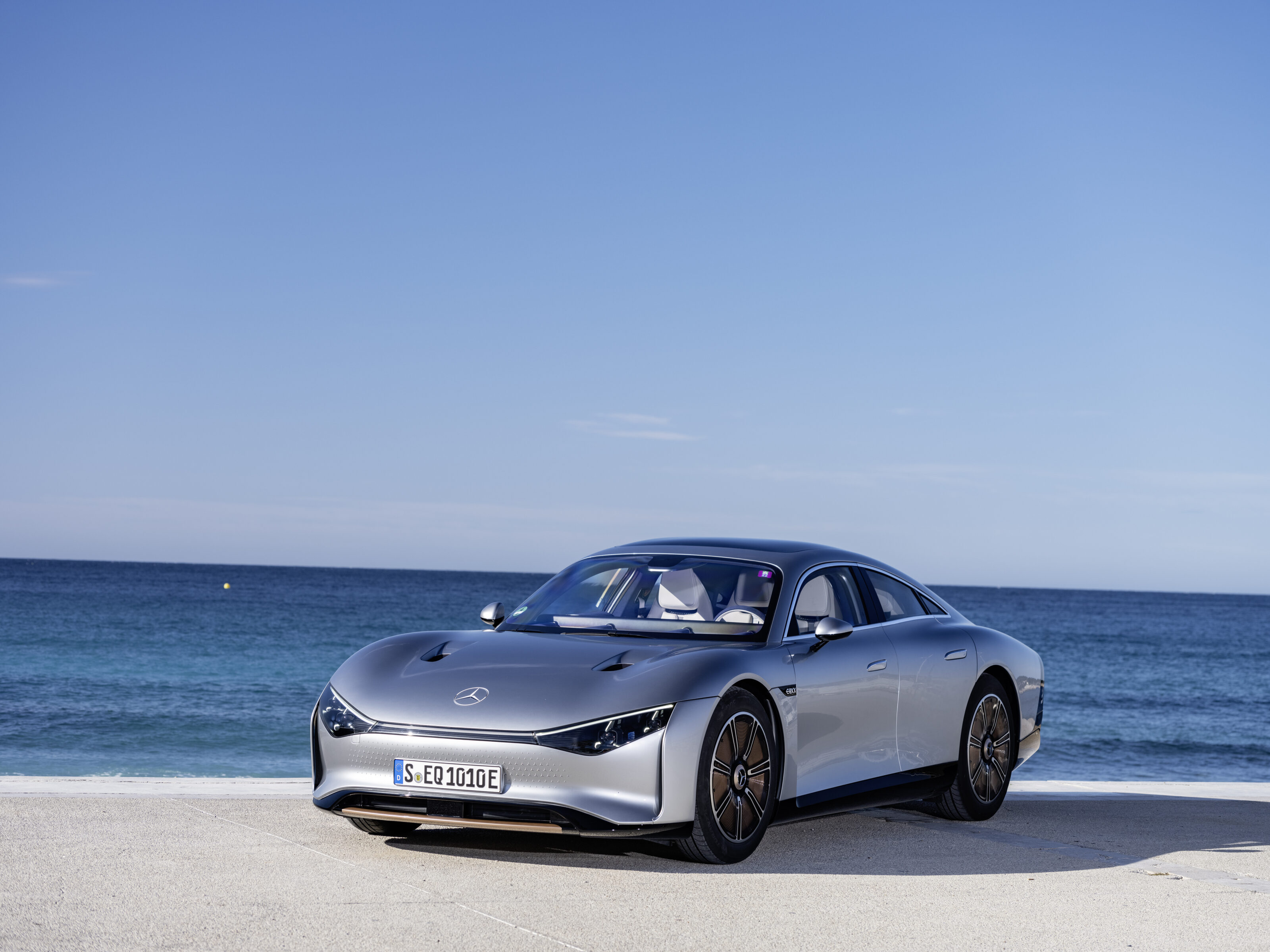
VISION EQXX trip data
We recommend
-
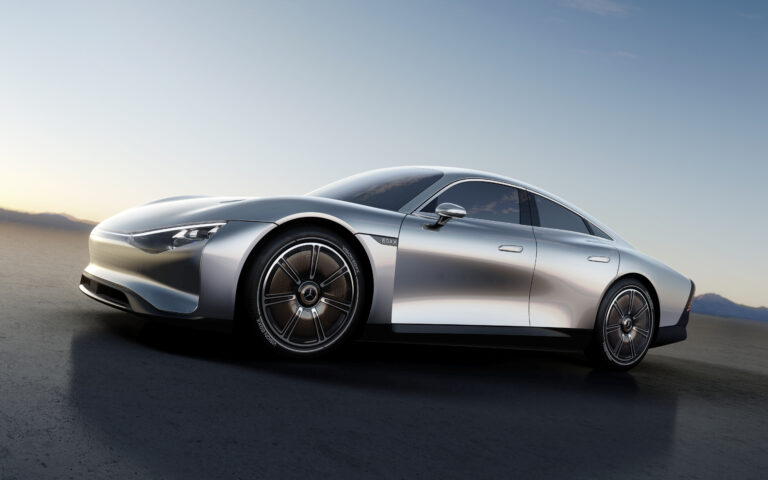 Features
FeaturesDetailed: The groundbreaking Mercedes-Benz EQXX concept
Merc’s Vision EQXX concept breaks new ground in terms of EV efficiency. But will that equal desirability? We dig under the slippery skin
-
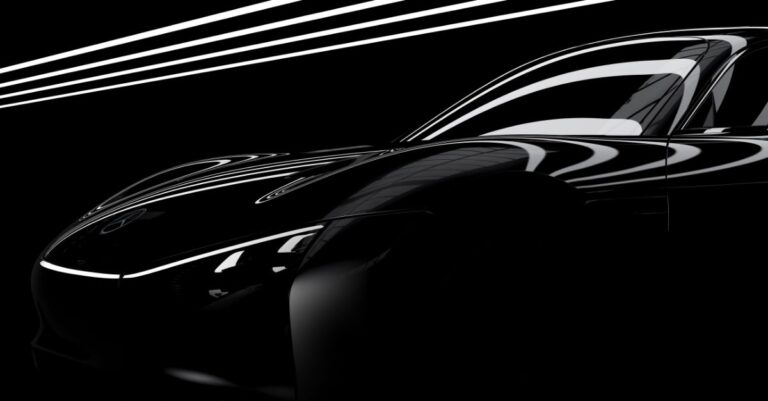 News
NewsMercedes-Benz announces Vision EQXX reveal date
The German manufacturer believes its car can do 1000km on a charge
-
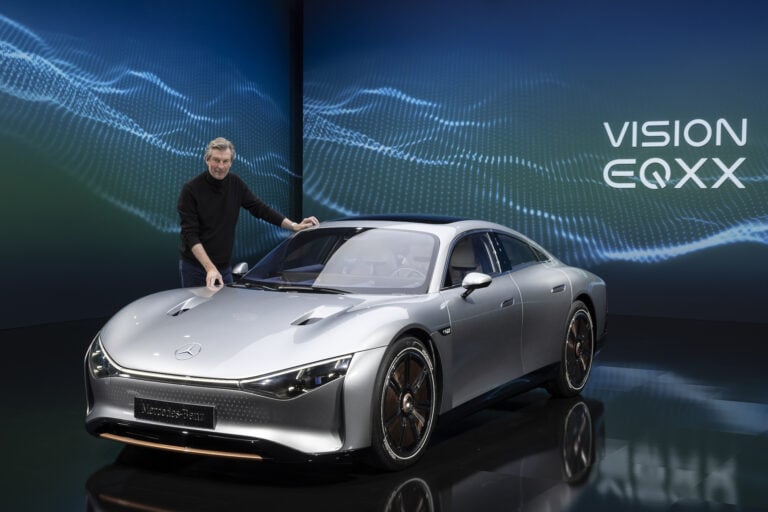 News
News2022 Mercedes-Benz EQXX: Reinventing the electric car
The Vision EQXX may well prove one of the most consequential concept cars of the early 21st century


